‘Little Lion’ Galaxy Could Shed Light On Big Bang, New Study
MessageToEagle.com – Astronomers at Indiana University recently found that a galaxy nicknamed Leoncino, or “little lion,” contains the lowest level of heavy chemical elements, or “metals,” ever observed in a gravitationally bound system of stars.
The Little Lion galaxy (also called Leoncino) that is located 30 million light-years from Earth in the constellation Leo Minor, may shed light on the nature of the Big Bang. The galaxy is a blast from the distant past of the visible universe.
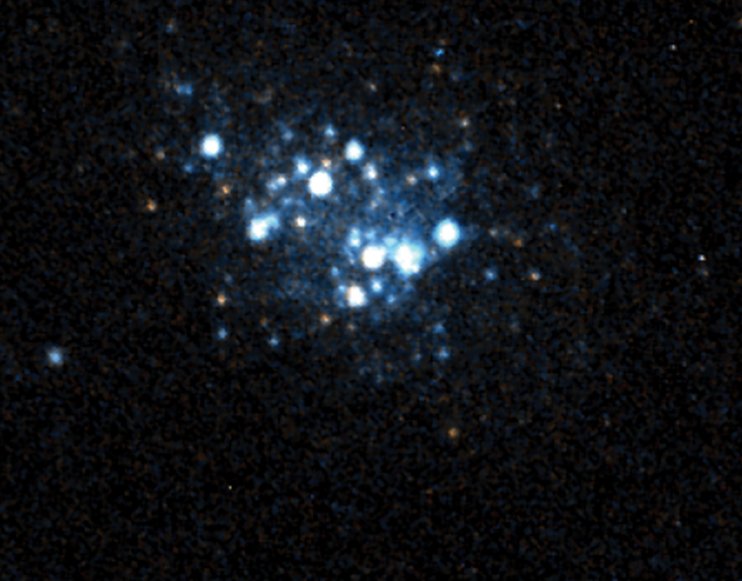
“Finding the most metal-poor galaxy ever is exciting since it could help contribute to a quantitative test of the Big Bang,” Professor John J. Salzer of Indiana University Bloomington said.
“There are relatively few ways to explore conditions at the birth of the universe, but low-metal galaxies are among the most promising.”
To find these low-metal galaxies, however, astronomers must look far from home.
Our own Milky Way galaxy is a poor source of data due to the high level of heavier elements created over time by “stellar processing,” in which stars churn out heavier elements through nucleosynthesis and then distribute these atoms back into the galaxy when they explode as supernovae.
“Low metal abundance is essentially a sign that very little stellar activity has taken place compared to most galaxies,” Alec S. Hirschauer, a graduate student in the IU Bloomington College of Arts and Sciences’ Department of Astronomy, said.
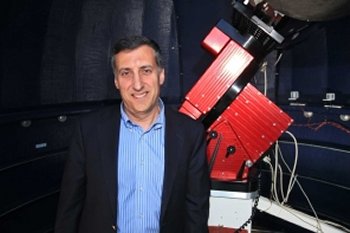
Leoncino (Officially, the “little lion” is named AGC 198691) is considered a member of the “local universe,” a region of space within about 1 billion light years from Earth and estimated to contain several million galaxies, of which only a small portion have been cataloged.
Aside from low levels of heavier elements, Leoncino is unique in several other ways.
A so-called “dwarf galaxy,” it’s only about 1,000 light years in diameter and composed of several million stars.
The Milky Way, by comparison, contains an estimated 200 billion to 400 billion stars.
A galaxy previously recognized to possess the lowest metal abundance was identified in 2005; however, Leoncino has an estimated 29 percent lower metal abundance.
Leoncino is also blue in color, due to the presence of recently formed hot stars, but surprisingly dim, with the lowest luminosity level ever observed in a system of its type.
“We’re eager to continue to explore this mysterious galaxy,” said Salzer, who is pursuing observing time on other telescopes, including the Hubble Space Telescope, to delve deeper into this fascinating object. “Low-metal-abundance galaxies are extremely rare, so we want to learn everything we can.”
The study appears in the Astrophysical Journal.
MessageToEagle.com
Expand for referencesReferences:
Related Posts
-
 Raindrops On Exoplanets Can Help Identify Habitable Planets Outside Our Solar System
No Comments | Apr 7, 2021
Raindrops On Exoplanets Can Help Identify Habitable Planets Outside Our Solar System
No Comments | Apr 7, 2021 -
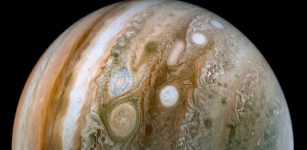 Juno Spacecraft Peers Deep Into Jupiter’s Colorful Belts And Zones
No Comments | Oct 30, 2021
Juno Spacecraft Peers Deep Into Jupiter’s Colorful Belts And Zones
No Comments | Oct 30, 2021 -
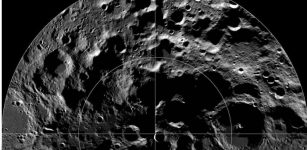 Carbon Dioxide Cold Traps On The Moon – Confirmed For The First Time
No Comments | Nov 16, 2021
Carbon Dioxide Cold Traps On The Moon – Confirmed For The First Time
No Comments | Nov 16, 2021 -
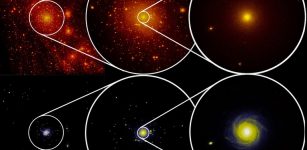 Is There Really Dark Matter? Answer Is Hidden In Motion Of Stars Within Small Satellite Galaxies
No Comments | Jun 26, 2018
Is There Really Dark Matter? Answer Is Hidden In Motion Of Stars Within Small Satellite Galaxies
No Comments | Jun 26, 2018 -
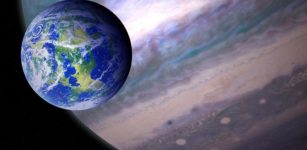 121 Giant Planets Discovered And They Have Moons That May Harbor Life
No Comments | Jun 16, 2018
121 Giant Planets Discovered And They Have Moons That May Harbor Life
No Comments | Jun 16, 2018 -
 The Space Environment Of Barnard’s Star b – Is It A Place For Life To Evolve?
No Comments | Apr 15, 2019
The Space Environment Of Barnard’s Star b – Is It A Place For Life To Evolve?
No Comments | Apr 15, 2019 -
 40-Year- Old Mystery Over Jupiter’s X-Ray Aurora – Finally Solved
No Comments | Jul 10, 2021
40-Year- Old Mystery Over Jupiter’s X-Ray Aurora – Finally Solved
No Comments | Jul 10, 2021 -
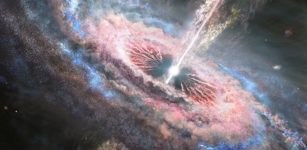 Powerful Quasar Tsunamis Can Prevent Stars From Forming
No Comments | Mar 26, 2020
Powerful Quasar Tsunamis Can Prevent Stars From Forming
No Comments | Mar 26, 2020 -
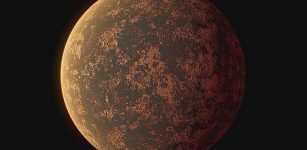 LHS 3844b: Rocky, Earth-Sized Exoplanet Is Missing An Atmosphere
No Comments | Aug 21, 2019
LHS 3844b: Rocky, Earth-Sized Exoplanet Is Missing An Atmosphere
No Comments | Aug 21, 2019 -
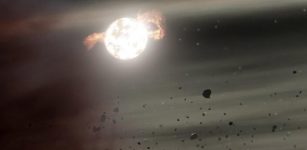 NASA Spots Giant Debris Cloud Created By Clashing Celestial Bodies
No Comments | Mar 19, 2022
NASA Spots Giant Debris Cloud Created By Clashing Celestial Bodies
No Comments | Mar 19, 2022
